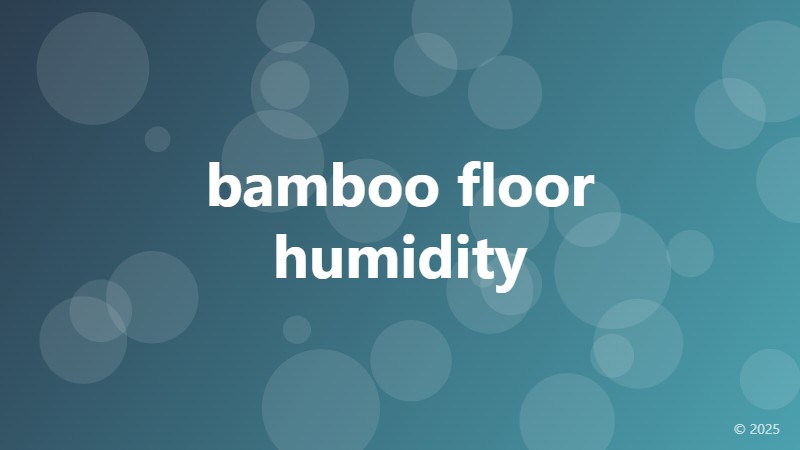bamboo floor humidity

The Importance of Humidity Control for Bamboo Flooring
Bamboo flooring has become a popular choice for homeowners due to its eco-friendliness, durability, and aesthetic appeal. However, like any other type of flooring, bamboo is sensitive to humidity changes, which can affect its performance and longevity. In this article, we'll explore the importance of humidity control for bamboo flooring and provide tips on how to maintain the ideal humidity level for your bamboo floor.
Why Humidity Affects Bamboo Flooring
Bamboo is a natural material that absorbs and releases moisture from the air. When the humidity level is too high or too low, bamboo flooring can shrink or expand, leading to various problems such as:
- Warped or cupped boards
- Cracks and gaps between boards
- Fading or discoloration
- Weakened structural integrity
Moreover, excessive humidity can lead to mold and mildew growth, which can compromise the indoor air quality and pose health risks to occupants.
The Ideal Humidity Level for Bamboo Flooring
The ideal humidity level for bamboo flooring ranges from 35% to 55%. This range allows the bamboo to maintain its natural moisture content without undergoing excessive shrinkage or expansion. To achieve this ideal range, homeowners can take the following measures:
- Use a hygrometer to monitor the humidity level
- Install a humidifier or dehumidifier as needed
- Ensure good ventilation and air circulation
- Avoid placing bamboo flooring in areas with high humidity, such as bathrooms or kitchens
Tips for Maintaining Bamboo Flooring in High-Humidity Areas
If you must install bamboo flooring in high-humidity areas, follow these tips to minimize the risks:
- Choose a bamboo flooring product with a high moisture resistance rating
- Apply a waterproof coating or sealant to the flooring
- Ensure proper drainage and slope in the area to prevent water accumulation
- Regularly inspect the flooring for signs of moisture damage
Conclusion
Bamboo flooring is a beautiful and eco-friendly option for homeowners, but it requires careful attention to humidity control to ensure its longevity and performance. By understanding the importance of humidity control and taking steps to maintain the ideal humidity level, you can enjoy your bamboo flooring for years to come.